How Gen X Invented Wokeness
The history of Qanon and the HR lady
When I say, “Gen X invented wokeness,” I don’t mean that Gen X invented leftism. Rather, I mean that wokeness, as a very distinct and intuitively recognizable version of leftism, was invented by Gen X. I also don’t meant that only Gen X can be woke — Millennials are more woke than Gen X, but they are plagiarizers! To describe the salient elements of wokeness in their essentials:
HR-Lady work culture
Adolescent transgenderism
(Sci-Fi transhumanism)
Aegosexuality, “shipping”
The normalization of plastic surgery
Social media signaling
A conspiratorial view of white supremacy
Qanon as an invention of Gen X
The twin origin of Qanon and wokeness in the 1999 WTO protests and 9/11
I’ll use some pertinent examples, such as Star Wars (1977), Tron (1982), Falling Down (1993), The Matrix (1999), Office Space (1999) to illustrate my points. These movies came out when the youngest Gen Xers were turning 13, and the last was released when the youngest Gen Xer turned 19 and the oldest turned 35.
My hope is to clean both Boomers and Millennials of the vile slander that they are responsible for everything bad (specifically Qanon and the Trump movement), and to show the connection between the psychology of wokeness and Qanon. The fact that all we hear is about “Boomers,” “Millennials,” and “Zoomers,” is because our culture is so dominated by Gen X, who so thoroughly lack introspection and self-awareness, that they act as if they have no influence on the culture, and thus we never heard about them. Gen X has an identity as “the rebels against the rebels” (the Boomer hippies), so they absolutely cannot stand the idea of being a dominant or even domineering force in anything. Yet here we are.
“Losing My Religion”
Gen X was the first generation to come of age during the greatest period of secularization in America’s history: 1990 to 2000. Gen Xers during this period ranged between 10 and 36 years old, which is a ripe time to rebel against the religion of your parents. “Fuck you, mom and dad!”
Some of the decline in religiousness may have resulted from a rise in pornography. While porn had existed since the abolition of obscenity restrictions in the 1960s, the industry didn’t really take off commercially until the 1990s.
Although most of the intellectuals leading the new atheist movement were Boomers, the first adopters of these ideas, en masse, were Gen X. The movie Zeitgeist (2007) (associated with the Venus Project) was directed by Peter Joseph (born 1979). While many of the viewers of Zeitgeist were Millennials, the first wave of New Atheism (pre-2001) was largely attracting young adults and teens, not middle aged people. It was a Gen X movement.
Later on, New Atheism experienced a second wage, influenced by the events of 9/11. This second wave much more heavily targeted Millennials, and is thought of as creating the twin forces of polarization in wokeness and the secular (from 2010 to 2017) libertarian to alt-right pipeline. But the alt-right can be seen as a Gen X project: Mike Peinovich (1977), Richard Spencer (1978), Keith Preston (1966), Jack Donovan (1974), Greg Johnson (1964), Vox Day (Theodore Beale, 1968), Andrew Breitbart (1969), Matt Drudge (1966), Mike Cernovich (1977), Michelle Malkin (1970), and Gavin McInnes (1970) could all be seen as alt-right or alt-lite.
Glenn Beck (1964) deserves a shoutout for almost singlehandedly making George Soros a household name — although he is not alt-right, he certainly influenced Qanon. Ezra Levant (1972), in his promotion of Faith Goldy and Gavin McInnes, could also be seen as influencing the direction of the alt-lite.
In response to the alt-right, the “intellectual dark web” was assembled, and was also largely Gen X: Dave Rubin (1976), Joe Rogan (1967), Sam Harris (1967), Bret Weinstein (1969), Eric Weinstein (1965), Douglas Murray (1979), Glenn Greenwald (1967), Ayaan Ali (1969).
Finally, the “cucks” of National Review included: Rod Dreher (1967), David French (1969), Rich Lowry (1968), Jonah Goldberg (1969).
To be clear, I am not trying to link all these competing factions of the right into one big conspiracy. Rather, I am trying to illustrate that our current political paradigm is almost entirely a creation, not of Boomers or Millennials, but of Gen X.
The Birth of the HR Lady
Anyone who has ever worked for a corporation is now familiar with “Human Resources culture.” In every corporation across America (and therefore, across the world), “HR culture” has a definite, regular morality, phraseology, attitude and approach. How did this arise? What is its function?
I presuppose that HR culture has a function, since, despite many corporate drones insisting that “we’d be better off without HR,” it still persists. If HR was so parasitic, so useless, such a waste of money, why doesn’t one company just dispense with it, and repeat the competitive advantage? The truth is that any company which eliminates “HR culture” will likely expose itself to serious, unnecessary risks. While HR culture does severely suppress productivity, it also suppresses risk to the degree that it becomes competitive.
For those who are too young or too blue collar to have an intuitive understanding of HR culture, I will provide an example:
You apply for a position at a software development company, technically a promotion. You already work at this company, and all of the people already know you, but you are told to “re-apply through HR,” as if you were a stranger. The HR person reviews your resume. You begin interview one out of three (four? five?). The first person you talk to during a Zoom meeting is there to coach you and give you feedback. They tell you that, although your resume does technically fulfill all the requirements of the position, it does not “communicate emotional impact.”
What the HR person is asking you to communicate is things like, “this experience made me feel like I was part of a family; we weren’t just employees, we were a community; I felt like I was making a difference; I felt a sense of greater purpose.” The amount of people who actually feel this way in a white collar software engineering position are slim to none, and those who do genuinely feel tingly feelings during their zoom huddles are probably mentally ill. Why does HR insist on forcing people to lie, and in the process, humiliating them?
HR, generally speaking, has no clue what you do. They can’t program. They don’t have technical skills. They can’t do math. What they do know how to do is be passive aggressive. Passive aggression is part of their sadistic power process. First, they break your spirit by forcing you to mouth a bunch of obvious lies and platitudes over the course of five interviews. Then, once you have showed sufficient obsequiousness, you will be permitted to do redundant busy work for a project that is either:
Unnecessary, but legally mandated because of some government regulation;
Essentially a scam your company is running on some other company, where they are selling a product or service that doesn’t do what it’s supposed to do, but their job is to make the backend so obscure that this other company can’t even measure what exactly it is that your service even does.
Sometimes, you will scam the government directly, but because that is illegal, it is less frequent.
Most of the economy isn’t about doing or making things, it’s about data capture and avoiding risk. Companies like Google, Amazon, Apple, and Microsoft already have a huge customer base. Their main goal isn’t to continuously improve their products or services. Rather, it is to entrench their customer base ever further into their brand, never allowing them to leave.
You may think that Amazon is just a place to buy books, but it’s also your grocery store. It's also Audible. It's also Twitch. It's also the doorbell camera that spies on your neighbors (and you).
Papa John’s Apocalypse
When Papa John said the n-word back in 2018, it wasn’t an isolated incident. Already in January he was complaining about the racial politics of the NFL, kneeling for the American flag to protest police brutality against blacks. Schnatter claimed that he was ousted from his own company by a “conspiracy” from his board of directors. Who is on the board of directors of Papa Johns?
Christopher Coleman, current chair, was appointed in 2012 — Gen X.1 John Garratt, Stephen Gibbs, Jocelyn Mangan, Sonya Medina, Shaquille O’Neal — all Gen X. Therefore, 6 out of the 9 members of the board are Gen X.2 John Schnatter was born in 1961, and is a late Baby Boomer. Could this generational divide explain some of the conflict between Schnatter and his board?
Papa John’s is typical. Most CEOs are Gen X. The average Fortune 500 company CEO is 58. That’s much younger than the average Boomer, who this year is turning 69. Whatever is going on in corporate America, it’s not the Boomer’s fault. It’s Gen X.
Woke and Harm Avoidance
The central feature of wokeness is not equality, but harm avoidance. Within corporate hierarchies, equality is impossible. But harm avoidance is not. The reasoning behind harm avoidance, from a corporate perspective, is that a useless employee is better than a hostile employee.
Corporations have two components: technics and sales. Technics is the “backend” stuff that makes the corporation work — code, engineering, scheduling, systems, processes, fail-safes, redundancy, quality control, hardware, maintenance, upkeep. If the sales team is hostile to the company, or the technical team is hostile, then this can cost a corporation, potentially, millions of dollars.
Consider a truck driver. In six weeks, anyone can get a CDL and start driving trucks. There are 3.5 million truck drivers in America, and every year, there are 300 roll overs, with a 50% chance of killing someone. In other words, one out of every 6,000 truck drivers is going to flip over and kill someone (likely themselves) this year.
From a corporate perspective, how expensive is a fatality? In Florida the cost per fatality is estimated at $3.4 million, while in Rhode Island and New Jersey the cost is $27 million. The difference in cost may have to do with government regulation, litigiousness, or the likelihood of lifetime earnings being higher in those states. On average, an American traffic fatality is said to have a total average economic cost of $6.6 million.
Going back to our pool of truck drivers, since 3,000 truck drivers are going to kill someone this year, that’s $19.8 billion dollars lost.3 Spread out over $3.5 million truck drivers, that’s an average cost of $6000 per driver.
You may be thinking, “I don’t drive a truck. I just mess around with spreadsheets. What does this have to do with me?” Well, imagine you say the n-word. Or imagine you systemically and demonstrably discriminate against dozens of black people over a period of several years. You could end up costing your company millions of dollars, since they are the ones who will be held liable in court.
HR as Demoralization Cult
Employees can harm their corporation. Even if there’s no trucks to crash, mismanagement of resources can result in millions of dollars of opportunity cost.
Imagine that you’re a truck driver, and you don’t do your job. You’re being paid $40k a year, but you just sit in the parking lot and do nothing. Eventually, you don’t even do your job — you just sit at home and someone else has to fill in for you. The cost to the company is $40k, over a period of a year. Compare this to a malicious, hostile, or out-of-control truck driver. He’s speeding, he’s drunk, he’s high on cocaine. He crashes, costing the company (and the economy) millions of dollars. $40k vs a million. The calculation is simple. In large corporations, malicious employees are more dangerous than incompetent employees.
The job of HR is to weed out and stamp out any employees who might subtly go “postal” and begin to sabotage their own company. The term “going postal” was popularized in 1993 (the year of Falling Down) when the oldest millennial was only 12 years old, and the oldest boomer was already 47. “Going postal” is definitely a Gen X thing.
The ultimate fantasy of Gen X was to rebel against authority. It is no coincidence, then, that it was members of Gen X themselves that created the “fake and gay” system of HR wokism to control their fellow Gen X “black sheep.”
Consider the plot of Office Space (1999): Three company workers who hate their jobs decide to rebel against their greedy boss. Now look at the cast:
Ron Livingston (1967), Jennifer Aniston (1969), David Herman (1967), Ajay Naidu (1972). Now consider their enemy, the boss: Gary Cole (1956) — BOOMER!
School Statistics
“Going postal” was the “school shooting” phenomenon of the Gen X generation. Both “going postal” and school shootings are the “tip of the iceberg”: they are a rare, violent expression of a much larger phenomenon of resentment, seething, or mental illness.
Going to highschool between 1979 and 1998 was actually pretty cool. Gen X didn’t have much of a problem with highschool. Ferris Bueller's Day Off (1986) lampoons school as boring because of the teachers, but praises the student body as generally fun to be around, even if they are a bit goofy or shy. Mean Girls (2004), by contrast, shows a cutthroat division between cool and uncool. School is no longer boring — it is vicious, miserable, and fake.
Consider the lyrics of the Millennial emo band, Billy Talent, in their song Nothing to Lose (2003):
I'd always walk home alone / So I became lifeless just like my telephone
Never played truth or dare / I'd have to check my mirror to see if I'm still here
My parents had no clue / That I ate all my lunches alone in the bathroomTeachers said it's just a phase / When I grow up my children will probably do the same
Kids just love to tease / Who'd know it put me underground at seventeen
Who are the teachers in this case?
Teachers, along with the general white population, have been getting older. While in 1998, over 75% of teachers were under age 50, in 2013, that number shrunk to 60%. This implies that the generation who started teaching in the 1990s have had remarkable staying power or tenure. They either remained in their positions longer than their predecessors, or, they created a generationally selective culture, using their power to influence hiring decisions in favor of their cohort. Or maybe, that age group just really liked teaching, and young people have become disgusted by the profession.
The average age of school teachers is 42.4,4 with the youngest in Kentucky (39.5) and the oldest in New Mexico (46.0). The majority of teachers are age 30-49, with this age group making up 56.9% of all teachers; 64.5% in Pennsylvania, and 49.4% in Arizona.
The question is, when did wokism originate? There are a few ways to investigate this phenomenon.
Literature on “homophobia” actually declined between the year 2000 and 2009. However, by 2013, anti-gay slurs tended to decline.
“Dude” peaked around 2010, while “bro” peaked after 2013. One of the prominent features of wokeness, ironically, is microaggression, or semantic pedantry: constant and unending scrutiny of the most innocuous commonplace phrases. “Don’t assume their gender! Be inclusive!”
If we assume that “woke” arrived between 2010 and 2013, we cannot view it as an organic, bottom-up phenomenon arriving from within millennials. Rather, it must be viewed as the result of 12 years of education at the hands of Gen X.
If the average age of teachers was 42 during this timeframe, then the first “woke” highschoolers would have had teachers born between 1968 and 1971. This would indicate that the first wave of Gen X teachers in our schools was directly responsible for wokeness.
We should consider, however, that the average age of teachers has been increasing over the past two decades.5 In 1980, for example, the average age of teachers was 36. If we use this as the lower bound, then we get a teacher birthyear range of 1974 to 1977.
Our total theoretical range, from 1968 at the earliest to 1977 at the latest, corresponds almost exactly to the core of Gen X (1965 to 1980). It could not be clearer that the emergence of wokeness among highschoolers between 2010 and 2013 was directly correlated with the moral, pedagogic, and mythological environment created by their school teachers.
The anti-bullying campaign, which began in 1999, was instigated by Gen X (at that time, ages 19 to 34). All 50 states have passed anti-bullying legislation, with the last being Montana, in 2015. Millennials could not have possibly been responsible for this legislation, since they were, at the oldest, 18 when the campaign began, and the youngest millennials were only 19 when the campaign was successfully completed. Anti-bullying was a Gen X crusade.
Wokeness may seem like a millennial invention, since they are the first post-woke generation. In other words, Gen X created wokeness, but could still remember a pre-woke period, and “code switch” between wokeness and “boomer speak.” For millennials, wokeness is all they have ever known.
Plato’s Republic, Book III [the Myth of the Metals]:
“Do you see any way of getting them to believe this tale?”
“No, not these themselves,” he said, “but I do, their sons and successors and the rest of mankind who come after.”
In other words, wokeness was a “noble lie” invented and perpetuated by Gen X to brainwash Millennials. Whereas Gen X never fully believed the lie, since they were the ones who consciously invented it, Millennials were fully duped, having been raised in it from birth.
The X Files
The X Files, which began in 1993, features every conspiracy theory under the sun: aliens, the JFK assassination, faking the moon landing, human-animal hybrids — everything. It also saw the genesis of the “shipping” phenomenon.6
In 1993, the average age of TV watchers wasn’t 57, but under 47, probably closer to 37.
The peak of X-Files was around the Season 5 premier, in 1997.
Internet users have been progressively getting older. It is reasonable to assume that the average age of message board users prior to 2002 was under 27, but above 18. This gives us a birthyear range of 1970 to 1979, which is definitively Gen X.
QAnon and Conspiracy
Gen X is not only responsible for the cringe of wokeness, but they are also responsible for the cringe of Qanon. Both stem from the same “X-Files”-tier conspiracy. Alex Jones (b. 1974) was the primordial Gen X conspiracy theorist, prior to his rightward turn during the Obama administration.
It is hard for us to remember the Alex Jones of 2000 to 2008, but his shtick was essentially compatible with Terrance McKenna and Joe Rogan. Bush did 9/11; fascism is coming; Bush is going to put everyone in FEMA camps; Bohemian Grove proved that the Republican party was full of hypocritical perverts; the Republicans want to micromanage your private life and regulate your bedroom; the moon landing was a hoax; they killed JFK (a pro-civil rights, anti-colonialist Democrat) because he was against big business; the corporations are destroying the environment.
All of this came in the wake of the 1999 Seattle WTO protests. The protests were in favor "antiglobalization," and were soon followed by protests against the IMF and World Bank in 2000. These were left-coded protests, but can be viewed as the genesis of both the Woke Left as well as the Qanon Right.
While Occupy Wallstreet in 2011 can be viewed as a Millennial protest, since the average age was 26,7 the celebrity figureheads of the protest were almost all boomers: David Crosby (1941), Russell Simmons (1957), Alex Baldwin (1958), Susan Sarandon (1946), Don King (1931), Noam Chomsky (1928), Jesse Jackson (1941), Cornel West (1953), Judith Butler (1956), Michael Moore (1954), with the exception of Kanye West (1977).
The reason why Occupy Wallstreet was not characteristically Gen X, but rather attracted a host of Boomer and Millennial supporters, is because it was too pragmatic, too grounded in reality. Gen X’s defining political feature is issues that are purely cultural in scope. Whereas the Marxism of the 1960s and 1970s was intimately connected with unionization and worker’s rights, Gen X completed a mass exodus from unions.
Pong was first released as an arcade game in 1972, when the oldest Gen X was turning 8; Pac Man in 1980, and Mario in 1985. In other words, Gen X was the first “video game” generation. Star Wars (1977) was one of the first films to feature a virtual reality headset.
The aesthetics of Tron (1982) were Gen X: a virtual utopia where everything is clean, fast, and perfect. Later on, the Matrix (1999) shows Keanu Reeves (1964) and Carrie-Anne Moss (1967) making Tron into a nightmare.
Today, Millennials make up the majority of cinema audiences, ages 28-43. However, depending on the genre, up to 31% of cinema audiences are under age 15, and for most genres, the majority are under age 35.
While Star Wars is a Boomer creation, its greatest impact would have been on the youngest audiences, coming of age. Gen X was the first post-Star Wars generation, the first post-Sci Fi generation. 2001: A Space Odyssey (1968) opened the genre up as the pinnacle of western art, a space for philosophy and deep contemplation.
While Boomer conspiracies centered on communism (the John Birch Society, for example), Gen X was basically too young in 1989 to get into these (the oldest Gen X was 25). Gen X didn’t fully swing into their “conspiracy” phase until after 1999, which was the central historical moment for Gen X. Everything centered around globalists or white supremacy.
The Plastic Generation
In 1976, Congress passed the Medical Device Amendment to the FD&C Act. The was the first time the government recognized and regulated the medical procedure of breast augmentation.
In 1997, over 200k cosmetic surgeries were purchased by customers ages 19 to 34 (birthyears 1964 to 1978). While Gen X did not invent plastic surgery, they were the first “post-plastic” generation.
Plastic surgeries grew almost uniformly between 1997 and 2004, before sharply declining after the 2008 recession. The lasting impact of the normalization of plastic surgery, and the growth of the industry, was to enable the widespread possibility of transgender surgery.
Gen X never caught onto the transgender craze themselves, but they did become teachers, guidance counselors, priests, and parents, who would normalize and push the practice upon Millennials and Zoomers. Currently, Gen X is between 44 and 60 years old, so for parents who had children between age 26 and 46, Gen X is still the dominant teen parenting group — not Millennials.
Millennials range from age 28 to 43. Although many of them have children, women’s median age at first birth is around 27. This means that, on average, only the oldest Millennials — 40 to 43 (birth year 1981-1984) have teenage children. The dramatic rise in transgenderism among Millennials cannot be attributed to Boomers, who are basically too old. Nor can we imagine that Millennials invented all of this themselves.
One argument about transgender identity is that it forms online, completely independent from the influence of parents. Even if this was the case, the internet was build by Gen X:
Sergey Brin (1973) and Larry Page (1973), founders of Google;
Marc Andreessen, founder of the first web browser and co-founder of Netscape (1971);
Jerry Chih-Yuan Yang (1968) and David Filo (1966), founders of Yahoo;
Chad Hurley (1977), Jawed Karim (1979), Steve Chen (1978), founders of Youtube;
Tom Anderson (1970) and Chris DeWolfe (1965), founders of MySpace;
Mark Gorton (1966), founder of Limewire;
Jeff Bezos (1964), founder of Amazon;
Pierre Omidyar (1967), founder of Ebay;
Peter Thiel (1967), Max Levchin (1975), Luke Nosek (1975), Kenneth Howery (1975), and Elon Musk (1971), founders of Paypal;
Rony Kahan (1972), founder of Indeed.com;
Rich Barton (1967), Lloyd Frink (1965), and Spencer Rascoff (1975), founders of Zillow;
Danni Ashe (1968), first successful internet pornographer;
Jimmy Wales (1966) and Larry Sanger (1968), founders of Wikipedia and fandom.com;
Jack Dorsey (1976), Evan Williams (1972), and Biz Stone (1974), founders of Twitter
Eric Yuan (1970), founder of Zoom;
Martin Lorentzon (1969), founder of Spotify;
Erik Cassel (1967), founder of Roblox;
Andrew Breitbart (1969), founder of breitbart.com;
Jason Kilar (1971), founder of Hulu.
Summary
Before 9/11, Gen X was experiencing the first wave of “New Atheism 1.0.” This sharp decline in religion in young adults from 1990 to 2000 led to the rise of a non-Christian right-wing in both the Alt-Right and Intellectual Dark Web, and created the mythological pressure to give rise to post-Christian cults like Qanon and wokeness.
HR Culture, a key component of “wokeness,” was invented by Gen X, against Gen X. Traditional “boomer” methods of workplace authority crumbled (yelling, harassment, hazing, “atta boy”) and were replaced with sadistic harm avoidance and passive aggression. (See “Going Postal” in 1993, or Office Space in 1999)
The beginning of wokeness in public schools was between 2010 and 2013, and this was the peak period of Gen X domination of public schools.
While Millennials were the first generation “raise on wokeness,” and therefore are the “most woke,” but Gen X was the first to create the vocabulary, morality, and particular flavors of wokeness.
Aegosexual concepts like “shipping,” which would later dominated tumblr, were invented by Gen X young adults on X-File message boards between 1993 and 1997.
Qanon was created by Gen X, not by boomers.
Gen X was the first “Sci Fi” generation. With The Outlaw Josey Wales (1976) being the last western, America moved its imagination from the frontier of the wild west to the frontier of space and virtual reality.
While Boomers invented plastic surgery, Gen X normalized it, which was a significant step toward the widespread commercial availability of gender reassignment surgery for minors. While the Boomers did not consider biologically modifying there children, Gen X was the first to provide puberty blockers and mastectomies for their kids.
This is not to say that Millennials are going to reverse the trends of Gen X. Qanon conspiracy theories, Wokeness, transgenderism, and social media are all likely here to stay. But stop blaming boomers for inventing Qanon, and Millennials for inventing wokeness. Give credit where credit is due. This is a Gen X world — we’re just living in it!
https://ir.papajohns.com/corporate-governance/board-of-directors
https://www.marketscreener.com/quote/stock/PAPA-JOHN-S-INTERNATIONAL-10589/company/
From a corporate perspective! Human life is of infinite value!
https://nces.ed.gov/surveys/ntps/tables/ntps1718_fltable02_t1s.asp
https://www.prb.org/resources/the-changing-age-structure-of-u-s-teachers/
https://www.cnn.com/2023/09/10/entertainment/x-files-anniversary-internet-culture-shippers-cec/index.html
https://www.newyorker.com/news/john-cassidy/wall-street-protests-who-are-the-99-and-what-do-they-want







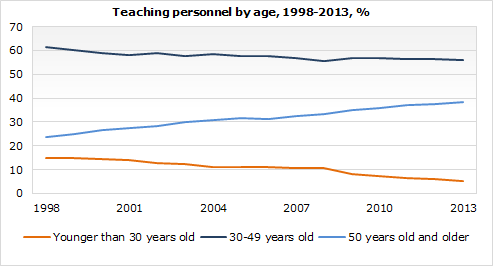



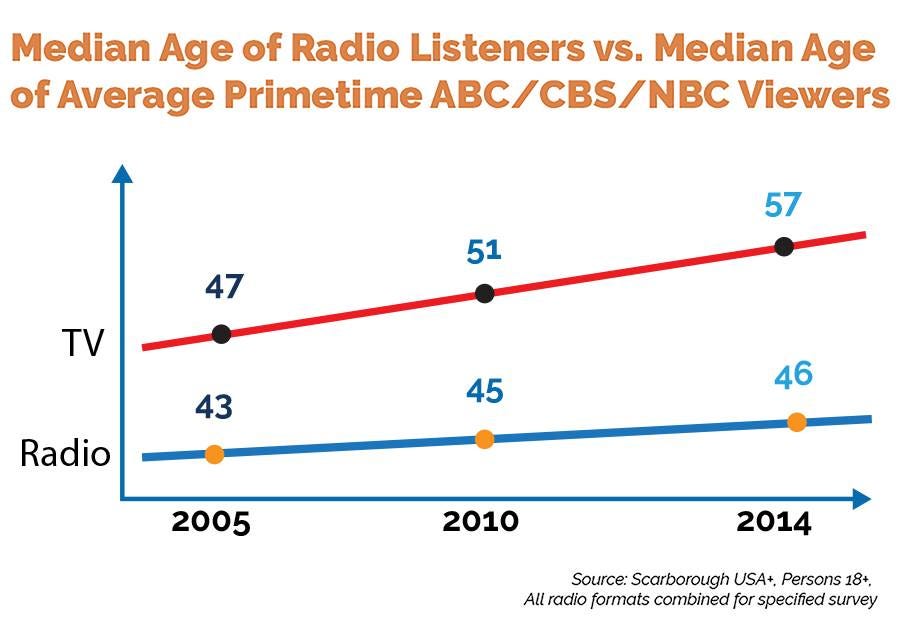
![OC] The X-Files Viewership - Seasons 1-9 (original run) : r/dataisbeautiful OC] The X-Files Viewership - Seasons 1-9 (original run) : r/dataisbeautiful](https://substackcdn.com/image/fetch/$s_!QOOX!,w_1456,c_limit,f_auto,q_auto:good,fl_progressive:steep/https%3A%2F%2Fsubstack-post-media.s3.amazonaws.com%2Fpublic%2Fimages%2F2c3136c1-ce0b-4538-85ad-26ccc44b9793_1789x1067.png)

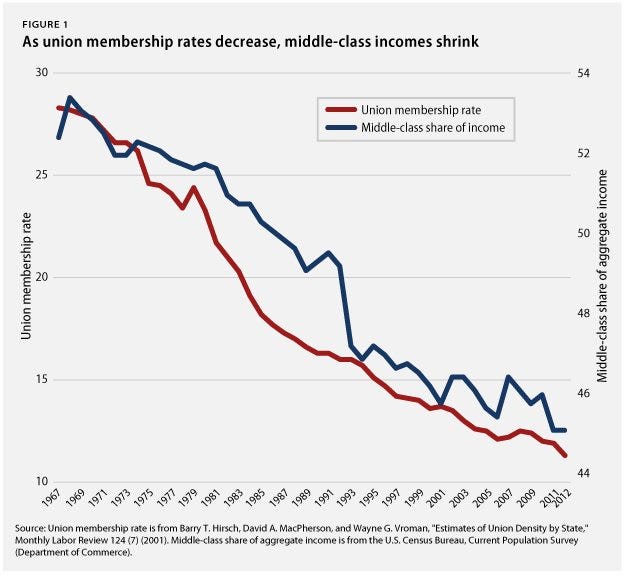

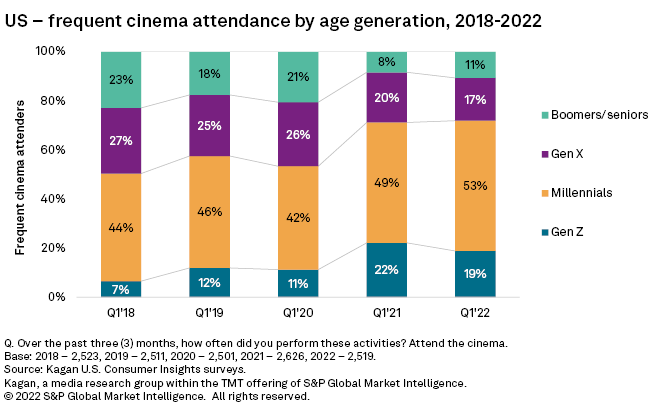


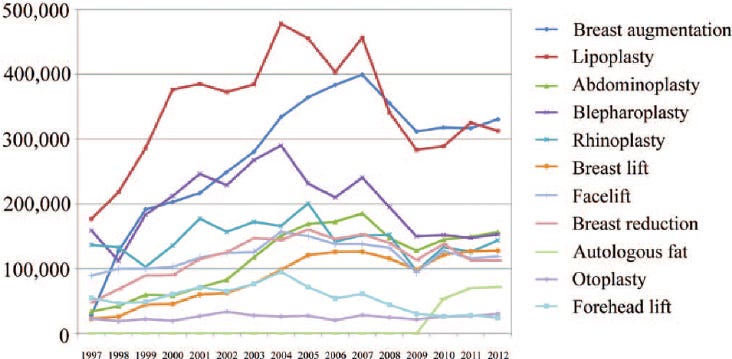


Talking about the online right and forgetting Curtis Yarvin (1973) is inexcusable!
In all seriousness, I think there is a lot of good substance here. I may have missed it, but if Woke is harm-reduction, why was Gen X motivated by it?
I wonder if there will be an article on HR/Longhouse culture as well as public education. That passive agressive phrase “please educate yourself” kills a bit of soul everytime I hear it.
People say that Gabe Newell was one of the most anti establishment people in business world because he had no formal education in programming and learned it himself but fuck, that’s boring. John Schnatter is THE REAL SHIT. That guy didn’t refuse to speak about controversial issues in a programatic and cynical way and now they have conspired against him and his mental health is dogshit. The day of reckoning will come.
P.